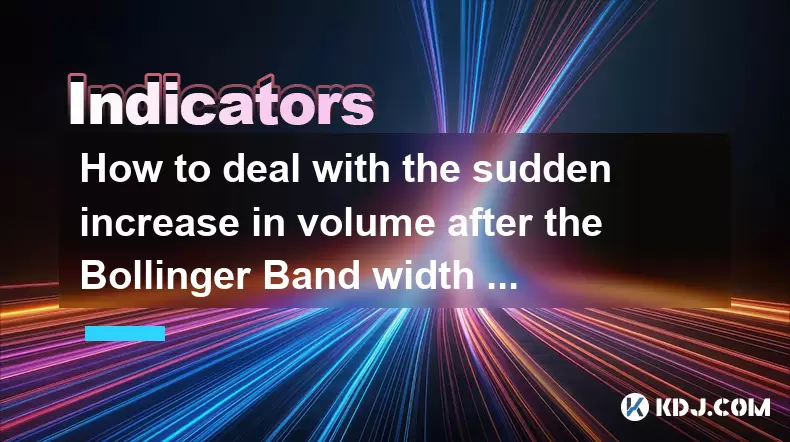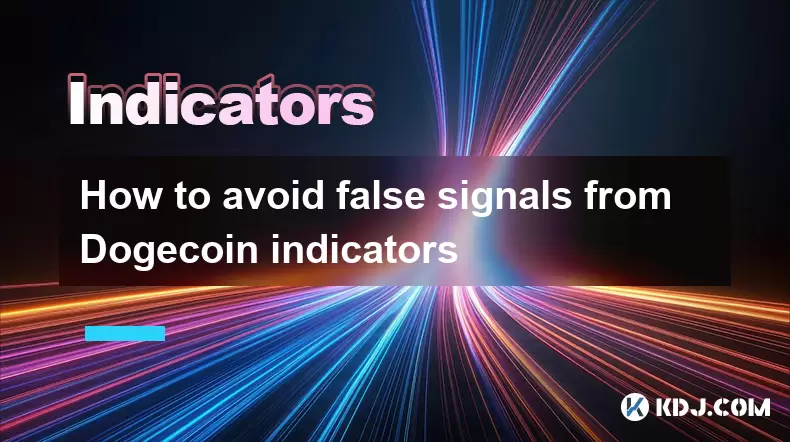-
 Bitcoin
Bitcoin $108,250.0992
0.11% -
 Ethereum
Ethereum $2,515.9404
0.03% -
 Tether USDt
Tether USDt $1.0003
0.00% -
 XRP
XRP $2.2166
-0.19% -
 BNB
BNB $656.5904
0.29% -
 Solana
Solana $147.4122
-0.58% -
 USDC
USDC $1.0000
-0.01% -
 TRON
TRON $0.2830
0.06% -
 Dogecoin
Dogecoin $0.1641
0.27% -
 Cardano
Cardano $0.5739
-0.19% -
 Hyperliquid
Hyperliquid $39.1463
-0.11% -
 Sui
Sui $2.8882
-0.02% -
 Bitcoin Cash
Bitcoin Cash $487.6428
0.31% -
 Chainlink
Chainlink $13.2097
0.07% -
 UNUS SED LEO
UNUS SED LEO $9.0308
0.10% -
 Avalanche
Avalanche $17.8608
0.13% -
 Stellar
Stellar $0.2379
-0.06% -
 Toncoin
Toncoin $2.7400
-0.39% -
 Shiba Inu
Shiba Inu $0.0...01144
-0.36% -
 Litecoin
Litecoin $87.5467
0.66% -
 Hedera
Hedera $0.1538
0.22% -
 Monero
Monero $315.5479
0.36% -
 Dai
Dai $1.0000
0.00% -
 Polkadot
Polkadot $3.3523
-0.71% -
 Ethena USDe
Ethena USDe $1.0003
0.01% -
 Bitget Token
Bitget Token $4.3960
-1.03% -
 Uniswap
Uniswap $7.2663
4.19% -
 Aave
Aave $272.8619
2.04% -
 Pepe
Pepe $0.0...09676
-0.18% -
 Pi
Pi $0.4586
-2.87%
How to deal with the sudden increase in volume after the Bollinger Band width hits a 10-day low?
A 10-day low in Bollinger Band width followed by a volume surge signals potential breakout or breakdown, offering traders strategic entry opportunities.
Jul 02, 2025 at 06:01 pm

Understanding the Bollinger Band Width
Bollinger Bands are a technical analysis tool that consists of a moving average and two standard deviation lines. The width of these bands reflects market volatility; when the width reaches a 10-day low, it indicates that the asset has experienced unusually low volatility over this period. A sudden increase in volume following such an event can signal potential price movement. Traders should understand how to interpret this combination.
The narrowing of Bollinger Bands often precedes a breakout or breakdown in price. When volume surges after this contraction phase, it may suggest that traders are reacting strongly to new information or a shift in sentiment. Recognizing this early can help position for a potential move.
Interpreting Volume Surge After Low Volatility
A spike in trading volume after a period of compressed volatility is significant because it breaks the equilibrium between buyers and sellers. This imbalance often leads to rapid price changes. The key here is to determine whether the surge is bullish or bearish.
When volume increases alongside a breakout above the upper Bollinger Band, it might indicate strong buying pressure. Conversely, if the price drops below the lower band with high volume, selling pressure could dominate. In both cases, the sudden volume increase acts as confirmation of the new trend's strength.
Traders should monitor candlestick patterns during this transition. A long bullish candle accompanied by rising volume after a 10-day low in Bollinger Band width may suggest a strong upward move. Similarly, a bearish engulfing pattern with heavy volume could imply a downward trend.
Evaluating Price Action Relative to Bollinger Bands
Price action around Bollinger Bands becomes crucial when volume surges after a volatility contraction. The interaction between price and the bands can provide clues about the direction and strength of the upcoming move.
If the price starts to move outside the upper or lower band shortly after the volume spike, it confirms that the market is entering a high-volatility phase. The movement beyond the bands is not necessarily a reversal signal in this context but rather a continuation or breakout sign.
Watch for how far the price travels from the bands. A strong initial push suggests momentum is building. However, if the price quickly reverts back into the band range, it might indicate false breakouts or temporary spikes without real conviction.
Entry Strategies Based on Volume and Bollinger Band Signals
When a trader identifies a 10-day low in Bollinger Band width followed by a sharp rise in volume, they can consider several entry strategies depending on their risk tolerance and time frame.
- Identify the direction of the breakout: Determine whether the volume surge coincides with a move above resistance or below support near the Bollinger Bands.
- Wait for a pullback: Sometimes, after the initial breakout, the price retraces slightly. This offers a second chance to enter at a better price.
- Use limit orders: Placing limit orders just beyond the breakout point can help avoid chasing the price.
- Confirm with other indicators: Combine volume and Bollinger Band signals with tools like RSI or MACD to filter out noise and enhance accuracy.
Each approach requires careful monitoring of volume behavior post-entry. If volume remains elevated, it supports the trade’s validity. A quick drop in volume may suggest a weak trend.
Managing Risk During Sudden Volatility Expansion
Entering a trade based on Bollinger Band width contraction and volume expansion comes with inherent risks. Proper risk management is essential to protect capital and ensure long-term success.
- Set stop-loss levels: Place stops just beyond the opposite side of the Bollinger Band or recent swing points to allow for normal price fluctuations.
- Adjust position size: Given the uncertainty after a low-volatility period, reducing position size can mitigate potential losses.
- Monitor trailing stops: As the price moves favorably, a trailing stop can lock in gains while allowing room for further movement.
- Watch for divergences: If volume declines even as the price continues in one direction, it could signal weakening momentum.
By incorporating these techniques, traders can manage exposure effectively while participating in potential large moves triggered by the volatility expansion.
Frequently Asked Questions
Q: Can I rely solely on Bollinger Band width and volume to make trading decisions?
While these two elements provide valuable insights, they work best when combined with other technical tools. Using them alone may lead to false signals or missed opportunities.
Q: How often does a 10-day low in Bollinger Band width occur in cryptocurrency markets?
In highly volatile crypto markets, such events can happen frequently, especially during consolidation phases. It’s more important to assess the context of each occurrence rather than its frequency.
Q: What time frames are most effective for analyzing Bollinger Band width and volume together?
Shorter time frames like 1-hour or 4-hour charts offer timely signals, but checking daily charts can help confirm broader trends. Combining multiple time frames improves decision-making.
Q: Should I adjust Bollinger Band settings when trading cryptocurrencies?
Standard settings (20-period SMA and 2 standard deviations) are widely used, but some traders tweak them for faster signals. Always backtest any changes before applying them in live trading.
Disclaimer:info@kdj.com
The information provided is not trading advice. kdj.com does not assume any responsibility for any investments made based on the information provided in this article. Cryptocurrencies are highly volatile and it is highly recommended that you invest with caution after thorough research!
If you believe that the content used on this website infringes your copyright, please contact us immediately (info@kdj.com) and we will delete it promptly.
- BNB, Nano Labs, and Binance: A $160 Million Crypto Play
- 2025-07-06 12:30:13
- Bitcoin, Taxing, and Fund Managers: Navigating the Crypto Maze in NYC
- 2025-07-06 12:50:14
- Debt Ceiling, Trump, and Bitcoin's Allure: A New York Minute on Fiscal Policy
- 2025-07-06 12:30:13
- Bitcoin, Ethereum, and Crypto Gains: What's Hot in the NYC Crypto Scene?
- 2025-07-06 13:10:15
- Zerion: Real-Time Portfolio Tracking Revolutionized
- 2025-07-06 13:10:15
- Bitcoin Transfer, Market Dip, and Speculation: Decoding the Crypto Whale's Moves
- 2025-07-06 12:35:13
Related knowledge

How to spot manipulation on the Dogecoin chart
Jul 06,2025 at 12:35pm
Understanding the Basics of Chart ManipulationChart manipulation in the cryptocurrency space, particularly with Dogecoin, refers to artificial price movements caused by coordinated trading activities rather than genuine market demand. These manipulations are often executed by large holders (commonly known as whales) or organized groups aiming to mislead...

What is the significance of a Dogecoin engulfing candle pattern
Jul 06,2025 at 06:36am
Understanding the Engulfing Candle Pattern in CryptocurrencyThe engulfing candle pattern is a significant technical analysis tool used by traders to identify potential trend reversals in financial markets, including cryptocurrencies like Dogecoin. This pattern typically consists of two candles: the first one is relatively small and indicates the current...

Dogecoin monthly chart analysis for long term investors
Jul 06,2025 at 10:08am
Understanding the Dogecoin Monthly ChartFor long-term investors, analyzing the monthly chart of Dogecoin (DOGE) provides a macro view of its price behavior over extended periods. The monthly chart captures major trends, key resistance and support levels, and potential reversal zones that are crucial for strategic investment planning. Unlike daily or hou...

How to manage risk using ATR on Dogecoin
Jul 06,2025 at 02:35am
Understanding ATR in Cryptocurrency TradingThe Average True Range (ATR) is a technical indicator used to measure market volatility. Originally developed for commodities, it has found widespread use in cryptocurrency trading due to the high volatility inherent in digital assets like Dogecoin (DOGE). The ATR calculates the average range of price movement ...

How to avoid false signals from Dogecoin indicators
Jul 06,2025 at 06:49am
Understanding Dogecoin Indicators and Their LimitationsDogecoin indicators are tools used by traders to analyze price movements and make informed decisions. These include moving averages, Relative Strength Index (RSI), MACD, and volume-based metrics. However, these tools can sometimes generate false signals, especially in highly volatile markets like Do...

Dogecoin Donchian Channels strategy
Jul 06,2025 at 02:43am
What Are Donchian Channels?Donchian Channels are a technical analysis tool used to identify potential breakouts, trends, and volatility in financial markets. They consist of three lines: the upper band, which marks the highest high over a specific period; the lower band, which reflects the lowest low over the same period; and the middle line, typically ...

How to spot manipulation on the Dogecoin chart
Jul 06,2025 at 12:35pm
Understanding the Basics of Chart ManipulationChart manipulation in the cryptocurrency space, particularly with Dogecoin, refers to artificial price movements caused by coordinated trading activities rather than genuine market demand. These manipulations are often executed by large holders (commonly known as whales) or organized groups aiming to mislead...

What is the significance of a Dogecoin engulfing candle pattern
Jul 06,2025 at 06:36am
Understanding the Engulfing Candle Pattern in CryptocurrencyThe engulfing candle pattern is a significant technical analysis tool used by traders to identify potential trend reversals in financial markets, including cryptocurrencies like Dogecoin. This pattern typically consists of two candles: the first one is relatively small and indicates the current...

Dogecoin monthly chart analysis for long term investors
Jul 06,2025 at 10:08am
Understanding the Dogecoin Monthly ChartFor long-term investors, analyzing the monthly chart of Dogecoin (DOGE) provides a macro view of its price behavior over extended periods. The monthly chart captures major trends, key resistance and support levels, and potential reversal zones that are crucial for strategic investment planning. Unlike daily or hou...

How to manage risk using ATR on Dogecoin
Jul 06,2025 at 02:35am
Understanding ATR in Cryptocurrency TradingThe Average True Range (ATR) is a technical indicator used to measure market volatility. Originally developed for commodities, it has found widespread use in cryptocurrency trading due to the high volatility inherent in digital assets like Dogecoin (DOGE). The ATR calculates the average range of price movement ...

How to avoid false signals from Dogecoin indicators
Jul 06,2025 at 06:49am
Understanding Dogecoin Indicators and Their LimitationsDogecoin indicators are tools used by traders to analyze price movements and make informed decisions. These include moving averages, Relative Strength Index (RSI), MACD, and volume-based metrics. However, these tools can sometimes generate false signals, especially in highly volatile markets like Do...

Dogecoin Donchian Channels strategy
Jul 06,2025 at 02:43am
What Are Donchian Channels?Donchian Channels are a technical analysis tool used to identify potential breakouts, trends, and volatility in financial markets. They consist of three lines: the upper band, which marks the highest high over a specific period; the lower band, which reflects the lowest low over the same period; and the middle line, typically ...
See all articles

























































































